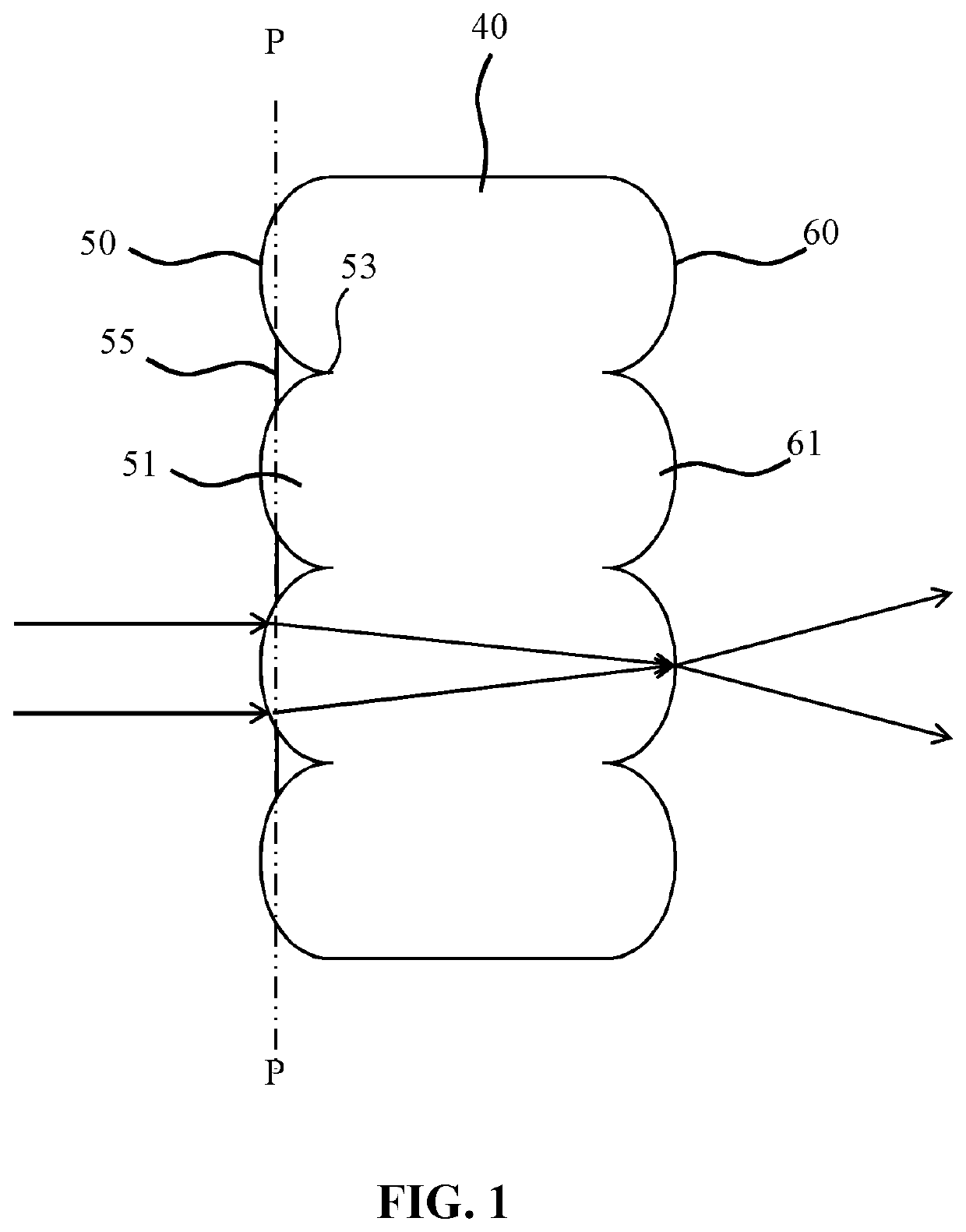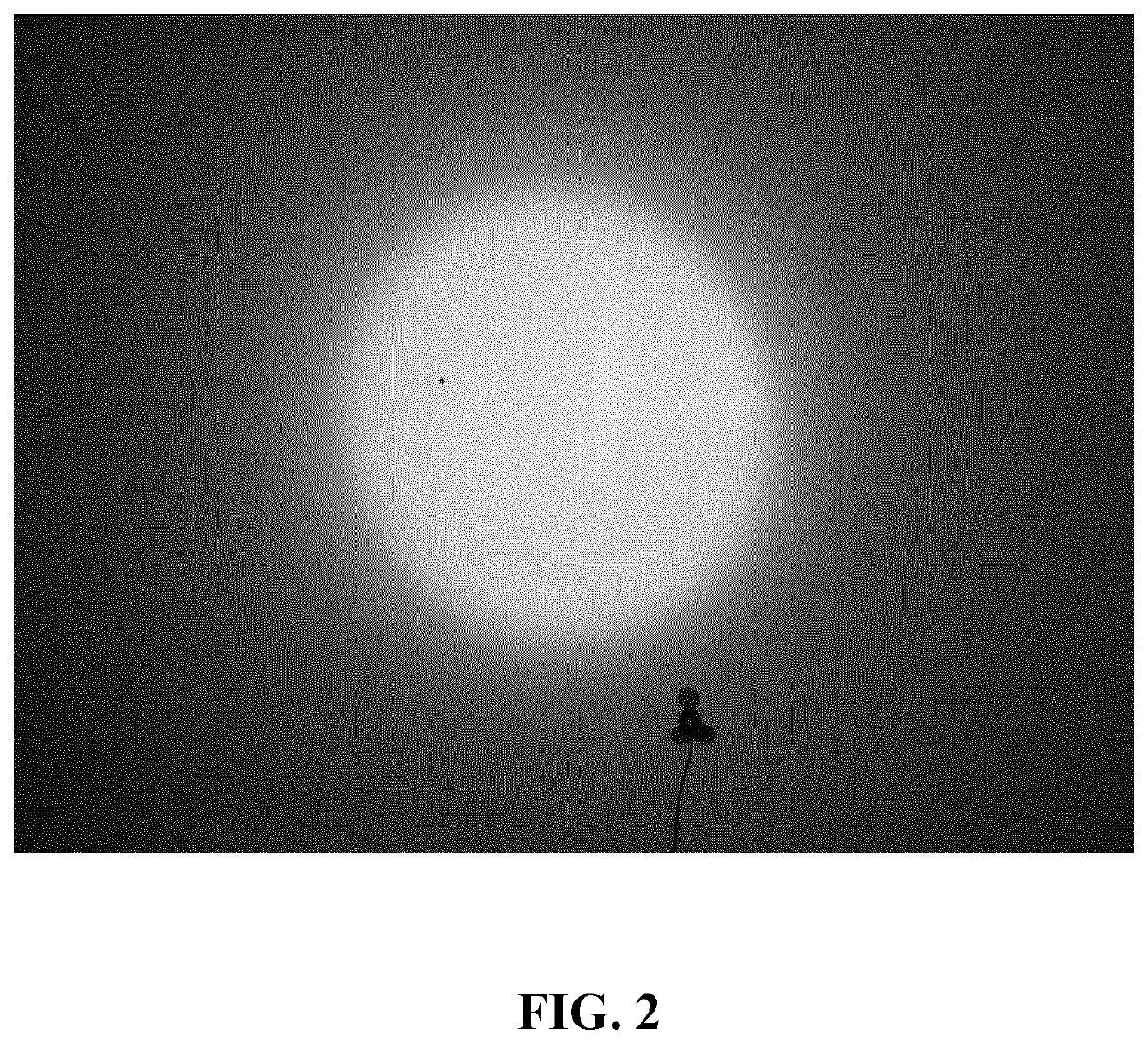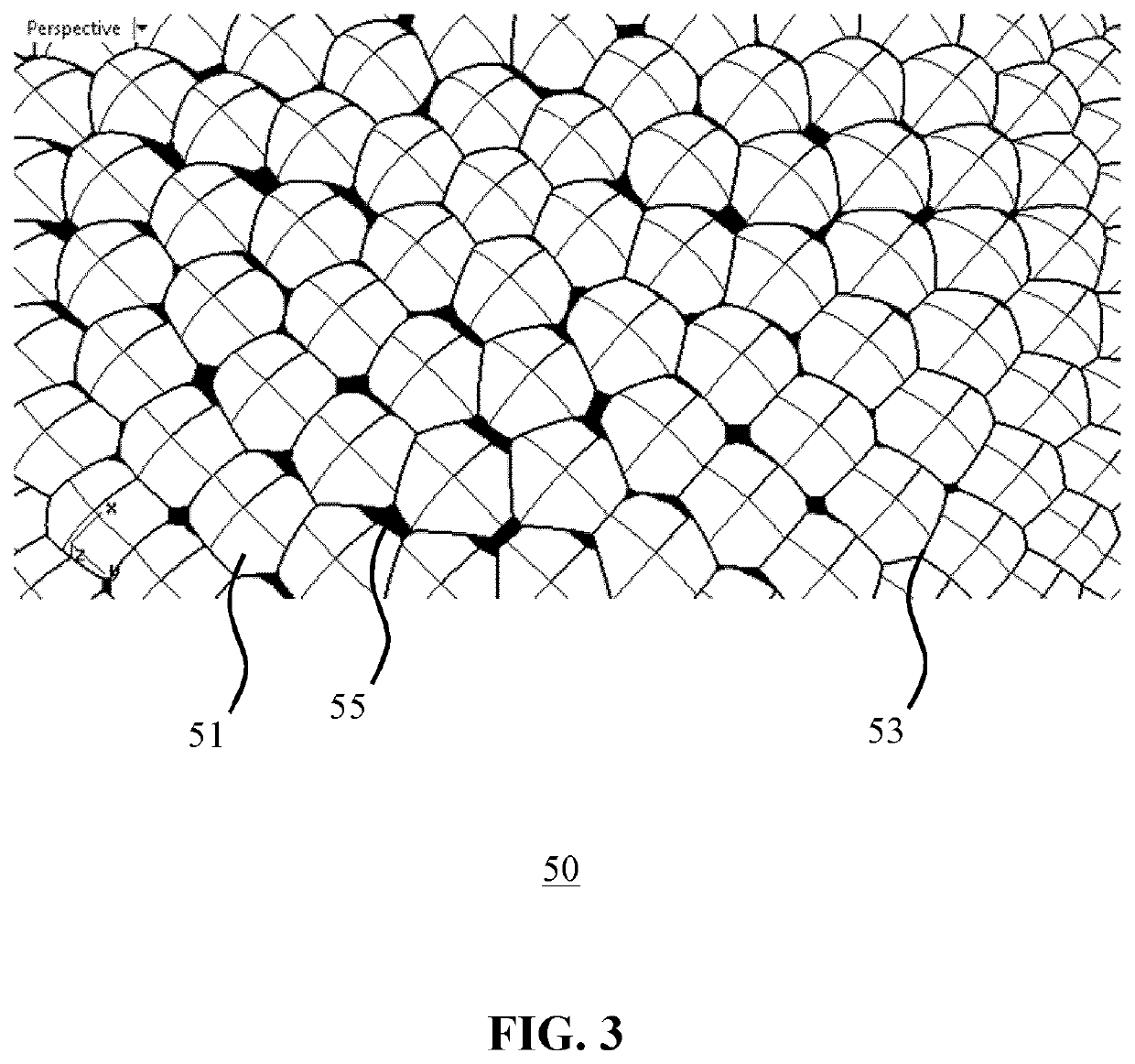LED beam shaping
a technology of led beams and lenslets, applied in the direction of instruments, lighting and heating apparatus, semiconductor devices of light sources, etc., can solve the problems of increased manufacturing cost and complexity of lenslet arrangements, artefacts visible, and difficult to create such images, so as to improve the beam forming capability, reduce manufacturing costs, and improve color uniformity
- Summary
- Abstract
- Description
- Claims
- Application Information
AI Technical Summary
Benefits of technology
Problems solved by technology
Method used
Image
Examples
Embodiment Construction
[0040]It should be understood that the Figures are merely schematic and are not drawn to scale. It should also be understood that the same reference numerals are used throughout the Figures to indicate the same or similar parts.
[0041]FIG. 1 schematically depicts a lenslet arrangement 40 according to an embodiment of the present invention. The lenslet arrangement 40 comprises a first lenslet array 50 and a second lenslet array 60. The first lenslet array 50 comprises a tessellated pattern of first lenslets 51 and the second lenslet array 60 comprises a tessellated pattern of second lenslets 61. The first lenslets 51 and the second lenslets 61 face away from each other in opposite directions, e.g. along the optical axis of the lenslet arrangement 40. In FIG. 1, the lenslet arrangement 40 is made as a single body comprising the first lenslet array 50 and the second lenslet array 60 on opposite surfaces of the single body, e.g. an integrating lenslet plate. This has the advantage that t...
PUM
 Login to View More
Login to View More Abstract
Description
Claims
Application Information
 Login to View More
Login to View More - R&D
- Intellectual Property
- Life Sciences
- Materials
- Tech Scout
- Unparalleled Data Quality
- Higher Quality Content
- 60% Fewer Hallucinations
Browse by: Latest US Patents, China's latest patents, Technical Efficacy Thesaurus, Application Domain, Technology Topic, Popular Technical Reports.
© 2025 PatSnap. All rights reserved.Legal|Privacy policy|Modern Slavery Act Transparency Statement|Sitemap|About US| Contact US: help@patsnap.com



